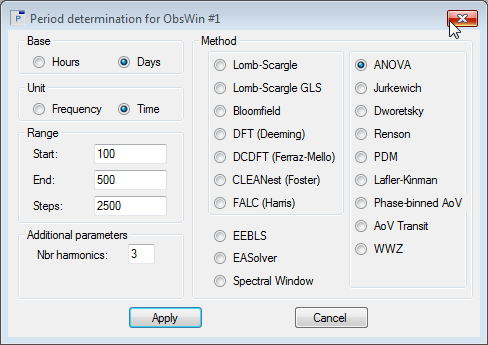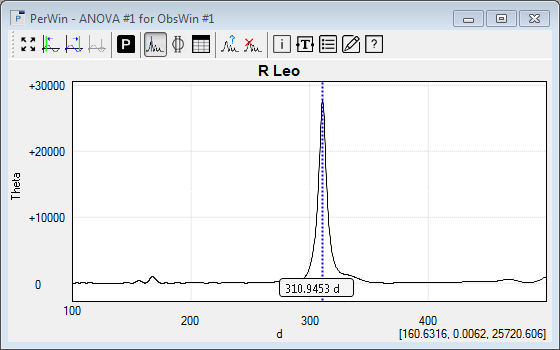- In a previous step of this tutorial, we have learned to perform a Lomb-Scargle period analysis. Repeat this step, but this time select ANOVA... from the Period Analysis menu. This again brings up the Period determination dialog box, allowing us to perform an ANOVA period analysis.

- You will notice that Peranso has recalled your Base - Unit and Range settings, but a new section Additional parameters has been added to the dialog box. Some period analysis methods require additional inputs, besides the values you enter in Base, Unit and Range. If that's the case, you will be asked to enter these value(s) in the Additional parameters section. For now, use the default value shown in Nbr harmonics. Click the Apply button to display a new PerWin:

- There are some obvious differences between the Lomb-Scargle and ANOVA Period windows. First, you will have noticed that the calculation of the ANOVA PerWin took much longer than the Lomb-Scargle PerWin. This is because ANOVA uses a more complex algorithm. In return, it produces a PerWin with a strongly improved peak detection sensitivity and it better damps alias periods.
We notice a dominant period at 310.9 days, which is in good agreement with the value found by Lomb-Scargle. If you open the Info dialog box of the ANOVA PerWin, you will see that ANOVA reports a much smaller period error value of 0.6 days, resulting from the improved peak detection sensitivity.
Combining both period analysis methods, we so far conclude - on the basis of the AAVSO sample of observations we used - that R Leo has a period of 311 +/- 1 days.
|